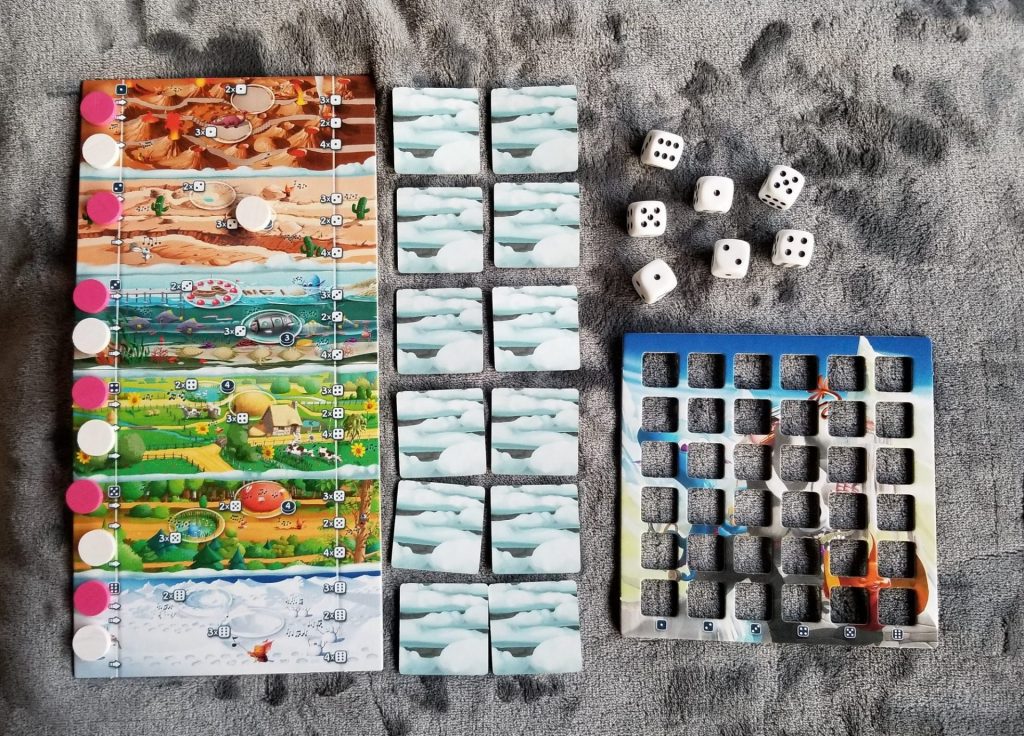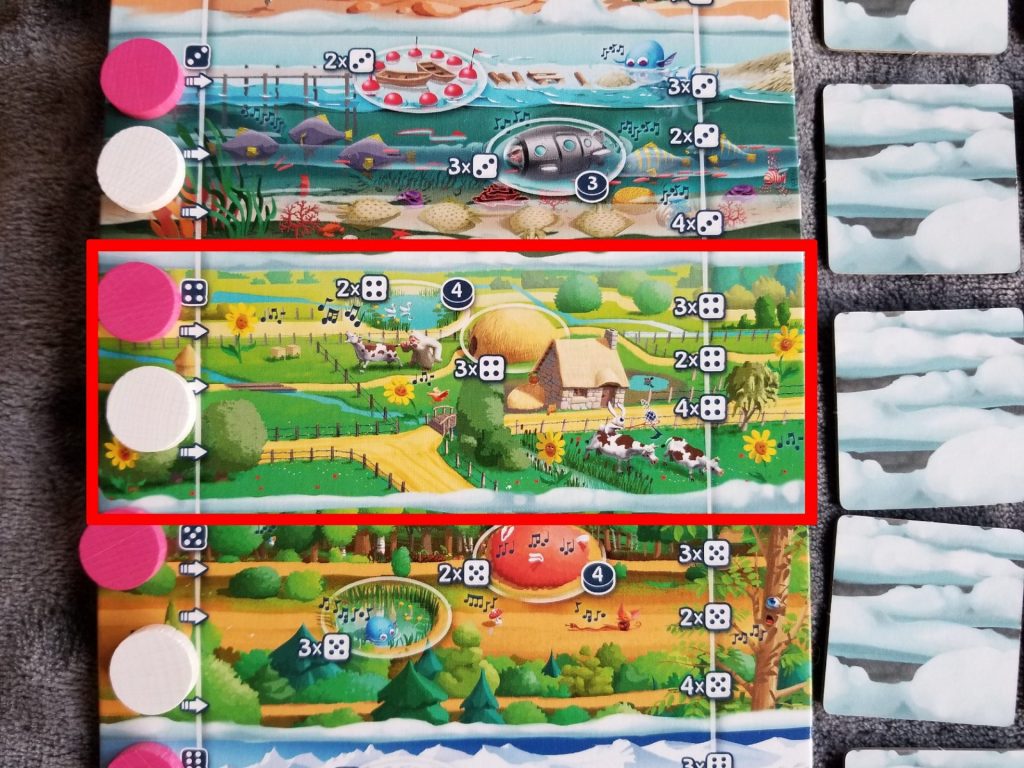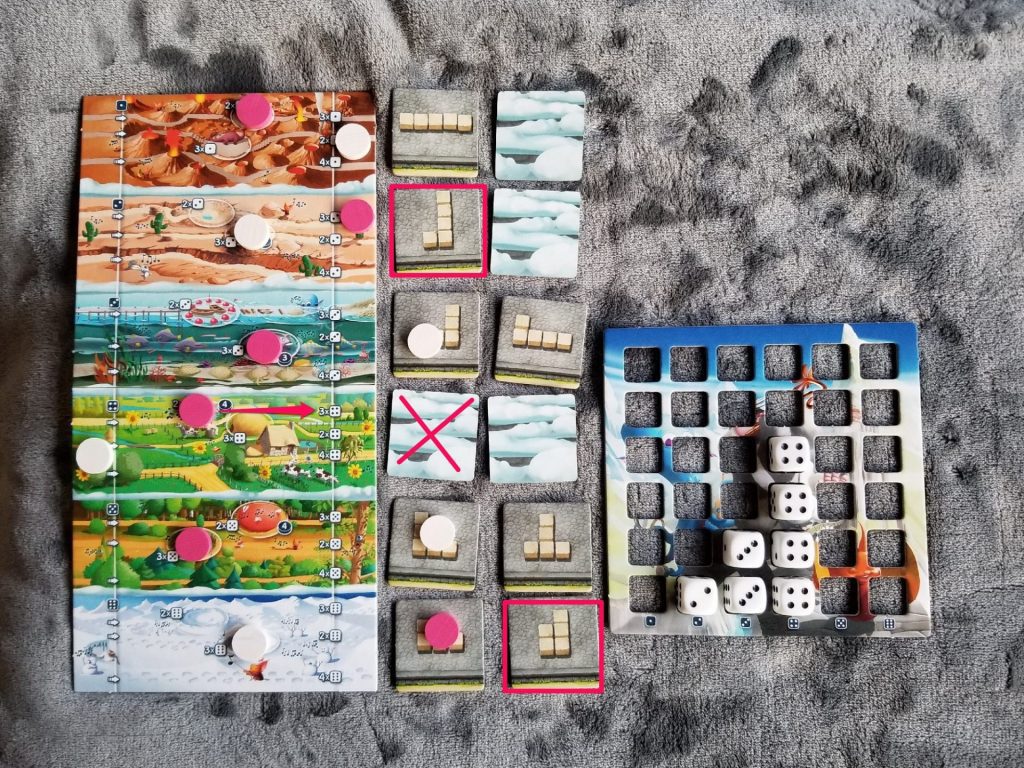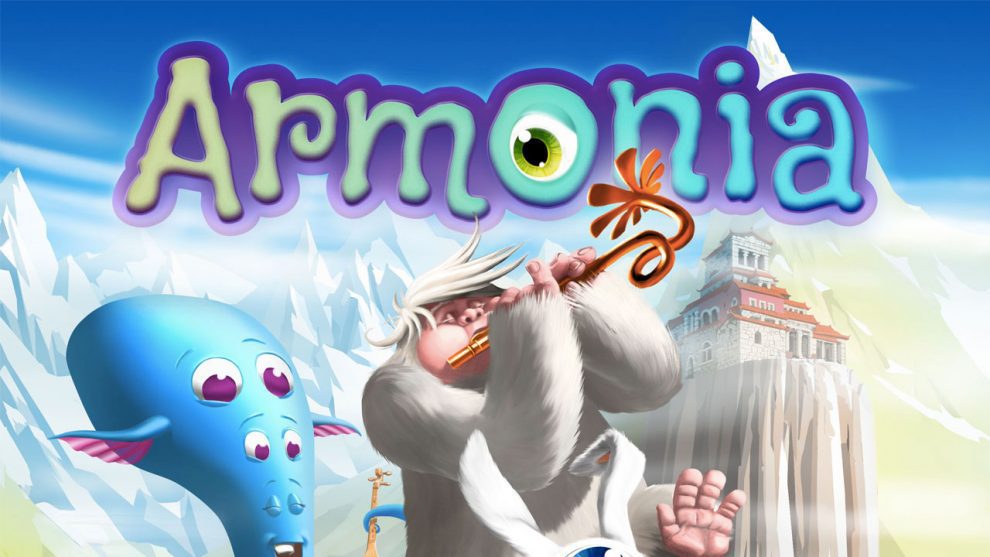Dear reader, if I know you (and I think I do) then I am sure that as you were reading my review of Sagani, you were asking yourself: “But David, where do Sound discs come from?!” And I’m sure the suspense has just been eating away at you for all these past months with many a restless night passed, tossing and turning in bed, praying for sleep, unable to quiet your inquisitive mind.
Well fret no longer. Tonight you shall sleep well for I have the answers you seek. Remember the lesson that Frankie and Benji mouse learned in the Hitchhiker’s Guide to the Galaxy, however. Sometimes the answers you seek aren’t always the answers you want. Sometimes the answers make about as much sense as the questions themselves.
This is just my long-winded way of saying that the story that lies at the center of Armonia makes about as much sense as the story lying at the heart of Sagani which is not much sense at all. The players are fantastical creatures moving through the various landscapes trying to find the most pleasing sounds before forging them into Sound discs by completing tasks at the temple. Now that you know the answer to your burning Armonia questions, I bet you’re kicking yourself, aren’t you? It’s so obvious once you know, right?
The Music Factory
Armonia is a dice-rolling and arrangement game. On a player’s turn, they will roll the dice up to 3 times with the opportunity to set aside any dice they wish to keep between each roll (or reroll dice set aside previously). Once the player has finished rolling the dice, they will assign the dice to either move along the different Wilderness paths (which require specific values) or to complete tasks at the Temple of the Clouds (which require specific spatial arrangements).
The first player to complete 4 sets of tasks is the winner.
It’s that simple. Of course, this is a very high level overview of Armonia. If you’d like to see how the game is played, continue reading. Otherwise, feel free to skip ahead to the Thoughts section.
Tuning Up
A fresh game of Armonia will look something like this:

The game board is laid out between the players. Each player’s Sound discs are placed on the start spaces of each of the six Wilderness tracks. To the far right of each Wilderness track are two Temple tiles drawn randomly and placed face down. The seven dice are placed close by, along with the Dice Board. It’s a very easy setup with a small footprint, perfect for carrying around in a bag or a purse to break out while waiting for your dinner to arrive.
Once the start player has been determined, the other players will position one or more of their Sounds discs on the Wilderness tracks according to their player order. Then you’re ready to begin.
Jam Session
Once a player has finished rolling their dice, they have a couple of options available to them and they can perform either or both. The first is to use the dice to move along the Wilderness paths.
Each path is subdivided into three different sub-paths. Moving along these requires the player to spend (from top to bottom) either a double, triple, or quadruple of a specific pip value. Once a player begins moving along one of these sub-paths, they are locked in and can only progress along the same path in future turns.
For instance, consider the circled Wilderness path:

The goal is to proceed from the left to the right as quickly as possible so that you can flip over and begin working on the Temple tiles (a.k.a. “tasks” – we’re getting to these). The bottom sub-path requires four-of-a-kind to instantly proceed from left to right. In this case, if you’ve rolled four 4s, then you can move your Sound disc from one side of the board to the other and uncover the first Temple tile. However, if you only rolled two 4s, you can only proceed along the uppermost sub-path as the middle one requires a total of three 4s. On a future turn, the only way to reach the end of the upper sub-path is to use three 4s to do so.
The second option is to forge the Sound discs by completing the Temple tiles. Completing these tiles is less about the values of the dice pips and more about the arrangements of the dice.
Each Temple tile shows several small squares laid out in a particular arrangement. If the dice you have selected for the round match the pattern, then you move your Sound disc onto the Temple tile and reveal the next one in line if it’s unrevealed. If you happen to match that pattern as well, then you can move your disc onto it and you’re one step closer to winning the game. As a matter of fact, you can move your Sound discs along any Temple tile path if your dice match the pattern. Uwe has included a handy Dice Board to help you better visualize your dice’s layout.
Here’s an example:

This dice layout satisfies all of the highlighted tiles.. Since there are four 4s included in the layout, you could potentially move along the corresponding Wilderness path if you haven’t already thereby uncovering the indicated Temple tile!
And, as mentioned previously, this continues until a player is able to complete both sets of tasks for four different rows first.
Thoughts
2020 was a big year for Uwe Rosenberg beginning with Fairy Trails (a racing game), followed by New York Zoo (a racing game), Sagani (a racing game), and culminating with what is quite possibly his biggest big box game to date, Hallertau (a point salad). 2021 was, comparatively, much less productive with just two titles released Tulpenfieber (a racing game) and the subject of this review which, as you might have guessed, is also a racing game. If you factor in 2018’s Reykholt and Robin of Locksley (also racing games), that’s a total of seven racing games out of his past eight releases. And he’s already announced a brand new game for this year called Framework which is yet another racing game.
Just reading that, you might be thinking that Uwe Rosenberg is flogging a dead horse at this point, but you’d be wrong. Each of these games, while sharing the same common win condition, are so vastly unlike the others that each feels fresh and unique. Such is the wizardry of Uwe Rosenberg. Armonia, while being a much lighter offering than many of his other titles, is no different in this regard. In fact, I’d go so far as to say that Armonia is so distinctly unlike any previous Uwe Rosenberg title that it almost feels like it wasn’t even designed by Rosenberg at all.
I must admit that the first time I read about Armonia, I was skeptical. While I was excited there was a new Rosenberg game on the horizon, coming hot on the trail of Hallertau, Armonia seemed like a massive step backwards. While Hallertau feels like a magnum opus, Armonia’s description reads like a project put out by a first time designer. I was prepared to simultaneously feel that warm feeling that comes from adding another item to a valued collection while also feeling that deep and abiding feeling of disappointment that comes from getting excited about something that doesn’t live up to your expectations. But Armonia is proof that a game doesn’t always have to be complex in order to be challenging and enjoyable.
Generally, I am not a big fan of dice-driven, press-your-luck games, which Armonia is in a fashion. I dislike giving up my feeling of control (however ephemeral and illusory it may be) in favor of crossing my fingers and hoping for the best. One leaves me feeling like I’m in the driver’s seat while the other makes me feel like I am just along for the ride. Armonia manages to straddle that line gracefully. While much of the game is reliant on getting the correct dice rolls, there is a lot of strategy involved in figuring out the best way to use them.
The genius of the game is the unlikely combination of needing specific values while also needing those values to create specific spatial patterns at the same time. This creates an interesting decision space wherein you’re trying to figure out a way to balance your progression along the Wilderness paths with your completion of the all important Temple tiles. Do you race to the end of a single Wilderness path and knock out the Temple tiles at the end, putting you at ¼ of the end goal, before tackling the next Wilderness path? Or do you try to progress along all of the Wilderness paths at the same rate so that you can focus all of your dice rolling on fulfilling the Temple tiles?
Don’t get me wrong. I’m not trying to hype this game up and make it sound like the next A Feast For Odin. Armonia is just as simplistic as it sounds but that’s most of its charm. It’s just complex enough to not be fluff and it’s just fluffy enough for it to not feel too complex. It hits that sweet spot in between and, at a short 30-40 minute play time, it never overstays its welcome. Wrapped up in a small package with a rules set that can be taught in less than two minutes, there’s no reason not to add Armonia to your board game arsenal, especially if you’re an Uwe Rosenberg fan like me.











Add Comment